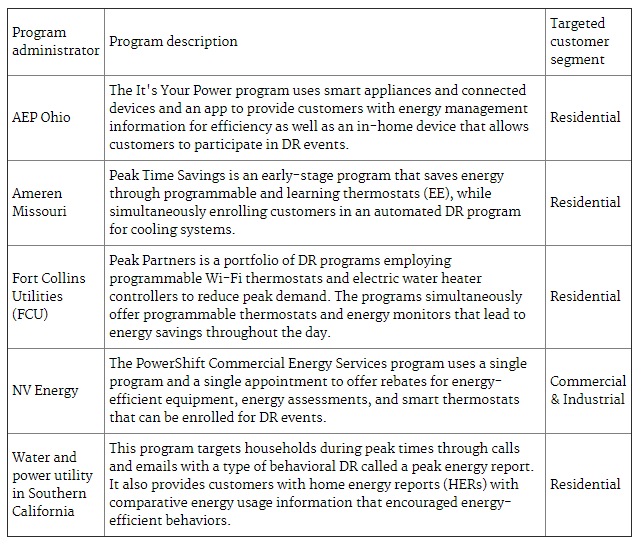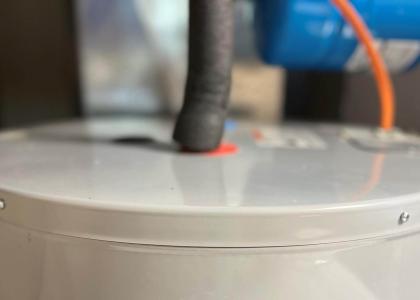In a large missed opportunity to boost power grid flexibility and benefit customers, relatively few US utilities have programs that fully integrate energy efficiency and demand response, according to ACEEE’s robust review of 44 utility filings.
Across the United States, we found 22 utility programs that integrate energy efficiency (EE) and demand response (DR) to some degree, but only five fully integrate them into a single program. Such integration can help grid operators meet customer demand reliably and at low cost, especially as more renewable resources enter the grid.
Because EE and DR can be complementary, many experts and organizations have long recognized the benefits of integrating them into single customer offerings. Energy efficiency programs focus on reducing energy waste by improving overall energy performance, while demand response programs incentivize customers to reduce or shift power demand at specific times.
We will discuss our new report and related topics at our upcoming National Conference on Energy Efficiency as a Resource next month in Minneapolis. Register today to avoid late fees, which kick in tomorrow.
Growing need for a more flexible grid
As our electric utility system evolves, there is an increasing need for greater flexibility in grid operation. Utilities are relying more on generation from renewable power, primarily wind and solar, with output that varies depending on whether the wind or sun is available at any given time. This continued shift will also come with an increasing number of electric vehicles that creates new power demand.
A recent heat wave in Texas illustrated the need for a more flexible grid. The resulting high demand for power caused electricity prices in wholesale markets to increase more than 100-fold. In a grid without demand flexibility, supply or transmission problems can trigger a spike in market prices.
New opportunities
Fortunately, a variety of technological advances, such as “learning” or “smart” thermostats and grid-interactive water heaters, are creating new opportunities to develop a more-flexible grid while also delivering customer benefits. Smart thermostats can not only provide more efficient operation of home heating and air conditioning systems that reduces customer energy costs, but also allow grid operators to provide relief at times of peak power demands without compromising customer comfort. We found that Wi-Fi connected thermostats such as Nest or ecobee are the most common technology addressed through integrated EE-DR programs.
Degrees of integration
The level of integration varies among programs. At one end of the spectrum are programs that promote and possibly enable both energy efficiency and demand response, but provide incentives and services to achieve only one of them. For example, a residential thermostat program may focus on efficient control of air conditioning and heating systems, but not use the connected capabilities of such devices for demand response.
At the other end of the spectrum are fully integrated programs that provide incentives and services to actively achieve both EE and DR with a single customer interface. Here are five such programs:
Barriers and promise
Why are there so few integrated programs? We identified barriers that include varying program objectives and primary beneficiaries and result in different, often siloed approaches, funding, and administration.
Overcoming these barriers will require organizational changes and supportive regulation. The result, though, is well worth it. Combining and integrating ER and DR programs can increase customer value while also providing a more flexible, responsive, and reliable grid for the future.
Grace Relf, a report co-author, contributed to this blog post.



